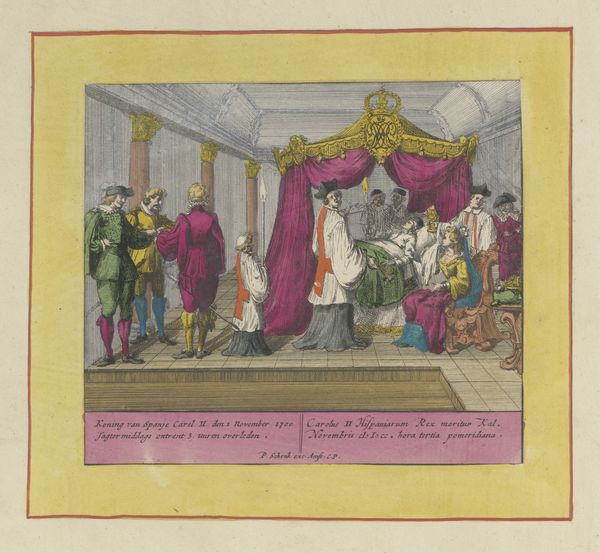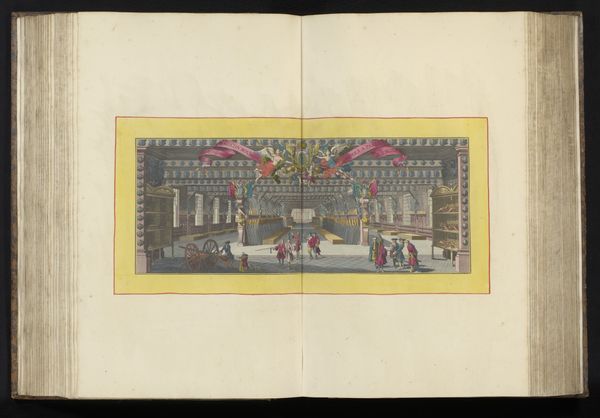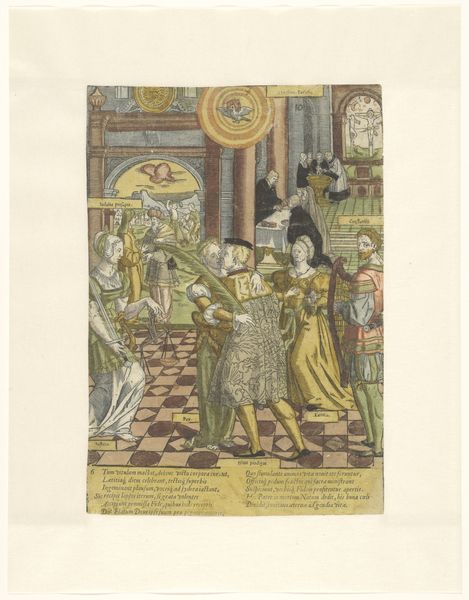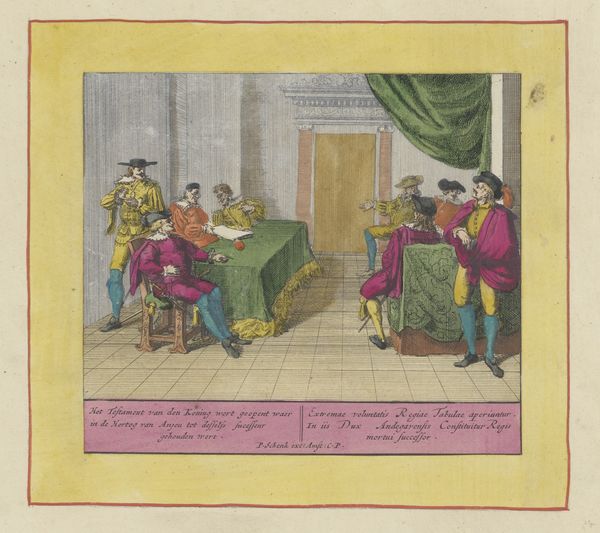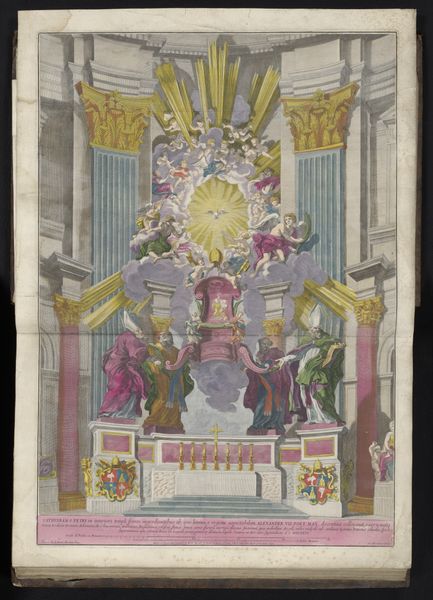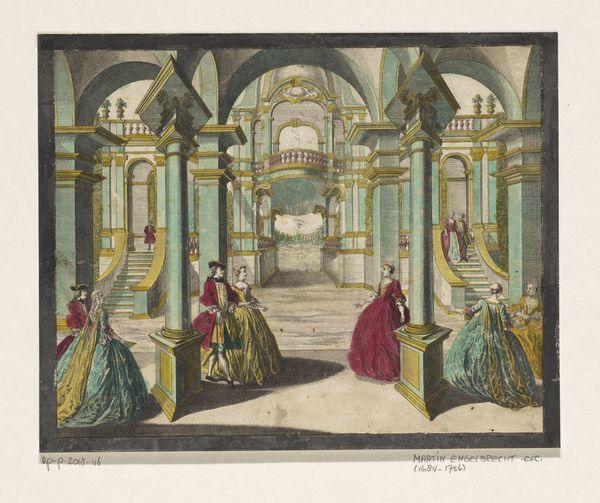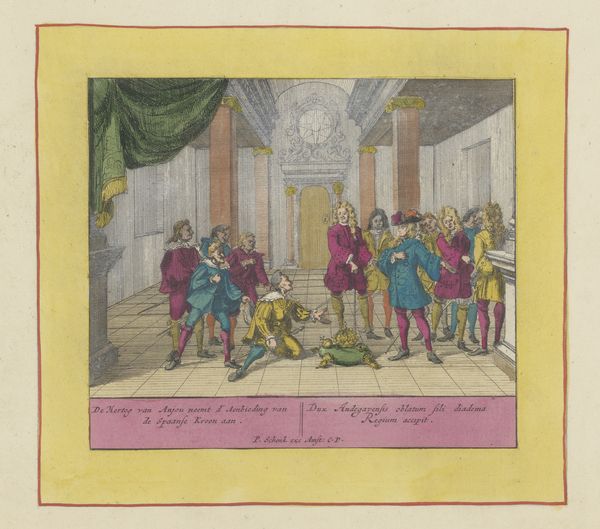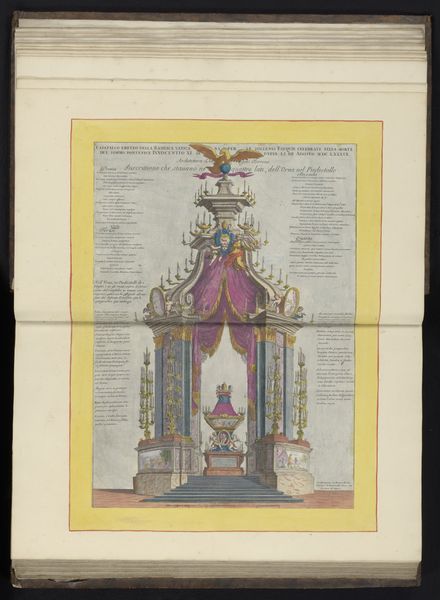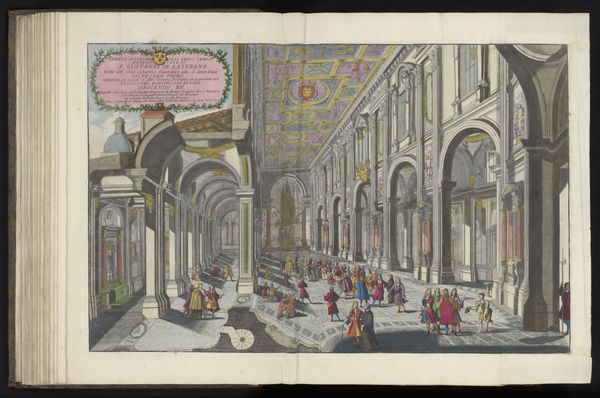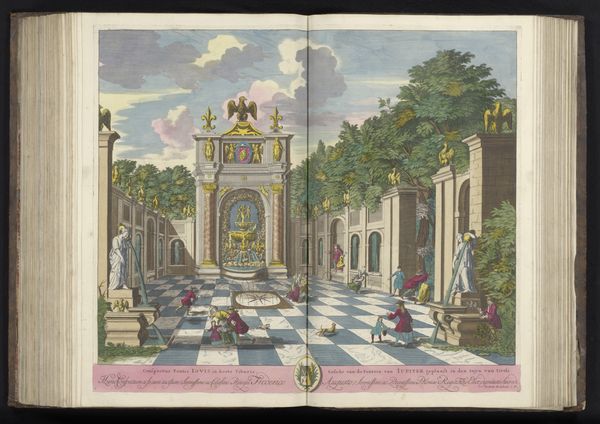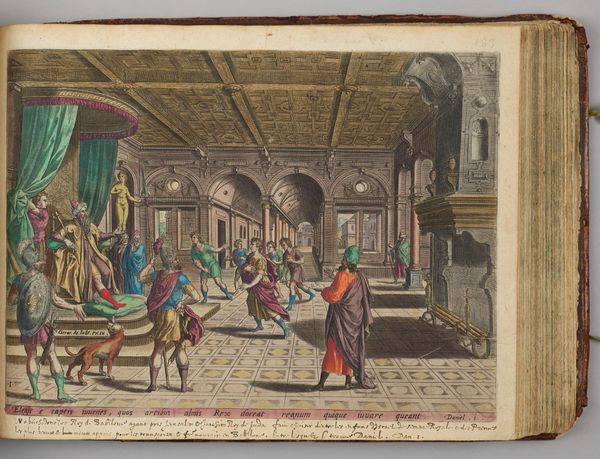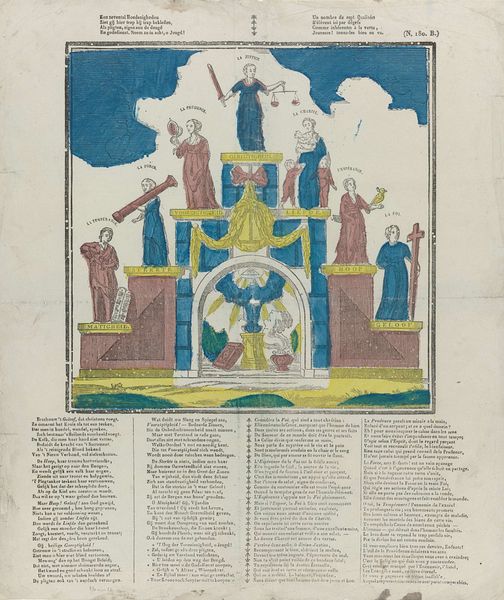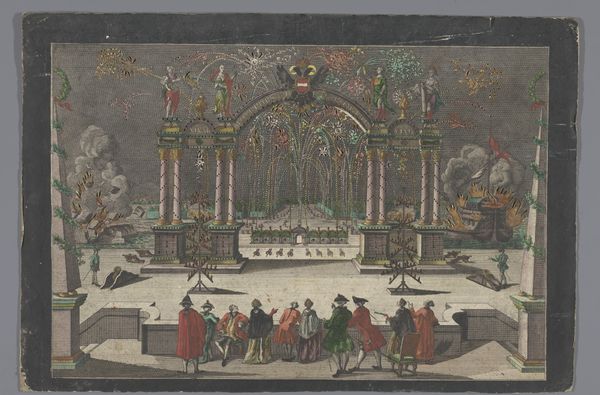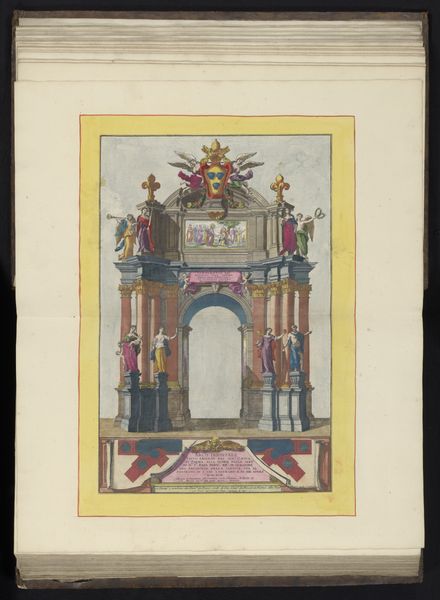
Erkenning van Lodewijk Filips, prins van Asturië en zoon van koning Filips V van Spanje, 1709 1709 - 1720
0:00
0:00
coloured-pencil, print, engraving
#
portrait
#
coloured-pencil
#
water colours
#
narrative-art
#
baroque
# print
#
coloured pencil
#
cityscape
#
history-painting
#
engraving
Dimensions: height 160 mm, width 190 mm
Copyright: Rijks Museum: Open Domain
Curator: Pieter Schenk's engraving, created sometime between 1709 and 1720, captures the "Recognition of Louis Philip, Prince of Asturias and son of King Philip V of Spain, 1709." It's currently held here at the Rijksmuseum. Editor: It's oddly formal, isn't it? The lines of sight, the regimented crowd... it feels less celebratory and more like a staged performance of power. There's an unsettling lack of dynamism, almost oppressive despite the pastel hues. Curator: Well, think of the Baroque period! Formality, elaborate staging – these were integral to demonstrating authority. The precise lines, the depiction of every dignitary... it's about illustrating hierarchy and legitimizing succession. Each figure meticulously rendered emphasizes his role within the court. Editor: And who exactly is being included in this spectacle? The figures dominating the center are undoubtedly members of the royal family and religious authorities. Everyone else is relegated to the sides, positioned in balconies. Curator: The use of perspective cleverly emphasizes the grand space, filling it with a large crowd. I think you’re spot on in pointing out that this wasn’t exactly representative. The balconies were probably filled with only nobles. This imagery transmits not just a historic moment, but an idea of order itself – an important value for the kingdom. Editor: Right. It feels like a reinforcement of existing power structures through carefully managed imagery. What's intriguing to me, however, is the small dog, which has an awkward position next to the bordering text. What message is the artist hoping to transmit by placing an animal so near the official writing? Curator: The animal provides an interesting detail, although it does feel separate from the work’s primary symbolic register. Perhaps this highlights the supposed omnipresence of the Crown throughout all society: nobody – man nor beast – evades the notice and rule of power. Editor: Perhaps. And isn't it interesting that the dog occupies roughly the same physical space in the lower right corner as the artist’s signature to the lower left? They are, therefore, equally notable elements of this piece of art. But by explicitly reminding us of this, Schenk suggests to me a much more provocative interpretation of courtly dynamics, in which human beings are little more than well-dressed animals! Curator: That certainly makes us look closer, doesn't it? These detailed engravings really were intended to cement power, and looking closer we realize how fragile these displays often are. Editor: Absolutely. By bringing awareness to previously accepted understandings of society through art, we open up avenues of social change even to this day.
Comments
No comments
Be the first to comment and join the conversation on the ultimate creative platform.
